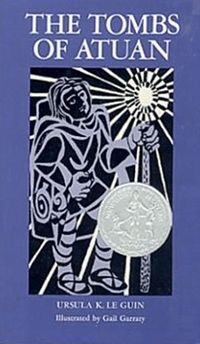it was three and a half feet deep, eight feet wide andtwenty-six feet long, exactly. i know because it was printed onone of the side benches in black letters. it also said that thelifeboat was designed to accommodate a maximum of thirty-twopeople. wouldn't that have been merry, sharing it with somany? instead we were three and it was awfully crowded. theboat was symmetrically shaped, with rounded ends that werehard to tell apart. the stern was hinted at by a small fixedrudder, no more than a rearward extension of the keel, whilethe bow, except for my addition, featured a stem with thesaddest, bluntest prow in boat-building history. the aluminumhull was studded with rivets and painted white.
that was the outside of the lifeboat. inside, it was not asspacious as might be expected because of the side benches andthe buoyancy tanks. the side benches ran the whole length ofthe boat, merging at the bow and stern to form end benchesthat were roughly triangular in shape. the benches were thetop surfaces of the sealed buoyancy tanks. the side bencheswere one and a half feet wide and the end benches werethree feet deep; the open space of the lifeboat was thus twentyfeet long and five feet wide. that made a territory of onehundred square feet for richard parker. spanning this spacewidthwise were three cross benches, including the one smashedby the zebra. these benches were two feet wide and wereevenly spaced. they were two feet above the floor of the boat– the play richard parker had before he would knock hishead against the ceiling, so to speak, if he were beneath abench. under the tarpaulin, he had another twelve inches ofspace, the distance between the gunnel, which supported thetarpaulin, and the benches, so three feet in all, barely enoughfor him to stand. the floor, consisting of narrow planks oftreated wood, was flat and the vertical sides of the buoyancytanks were at right angles to it. so, curiously, the boat hadrounded ends and rounded sides, but the interior volume wasrectangular.
it seems orange – such a nice hindu colour – is the colourof survival because the whole inside of the boat and thetarpaulin and the life jackets and the lifebuoy and the oars andmost every other significant object aboard was orange. eventhe plastic, beadless whistles were orange.
the words tsimtsum and panama were printed on eachside of the bow in stark, black, roman capitals.
the tarpaulin was made of tough, treated canvas, rough onthe skin after a while. it had been unrolled to just past themiddle cross bench. so one cross bench was hidden beneaththe tarpaulin, in richard parker's den; the middle cross benchwas just beyond the edge of the tarpaulin, in the open; andthe third cross bench lay broken beneath the dead zebra.
there were six oarlocks, u-shaped notches in the gunnel forholding an oar in place, and five oars, since i had lost onetrying to push richard parker away. three oars rested on oneside bench, one rested on the other and one made up mylife-saving prow. i doubted the usefulness of these oars as ameans of propulsion. this lifeboat was no racing shell. it was aheavy, solid construction designed for stolid floating, not fornavigating, though i suppose that if we had been thirty-two torow we could have made some headway.
i did not grasp all these details – and many more – rightaway. they came to my notice with time and as a result ofnecessity. i would be in the direst of dire straits, facing a bleakfuture, when some small thing, some detail, would transformitself and appear in my mind in a new light. it would nolonger be the small thing it was before, but the most importantthing in the world, the thing that would save my life. thishappened time and again. how true it is that necessity is themother of invention, how very true.
